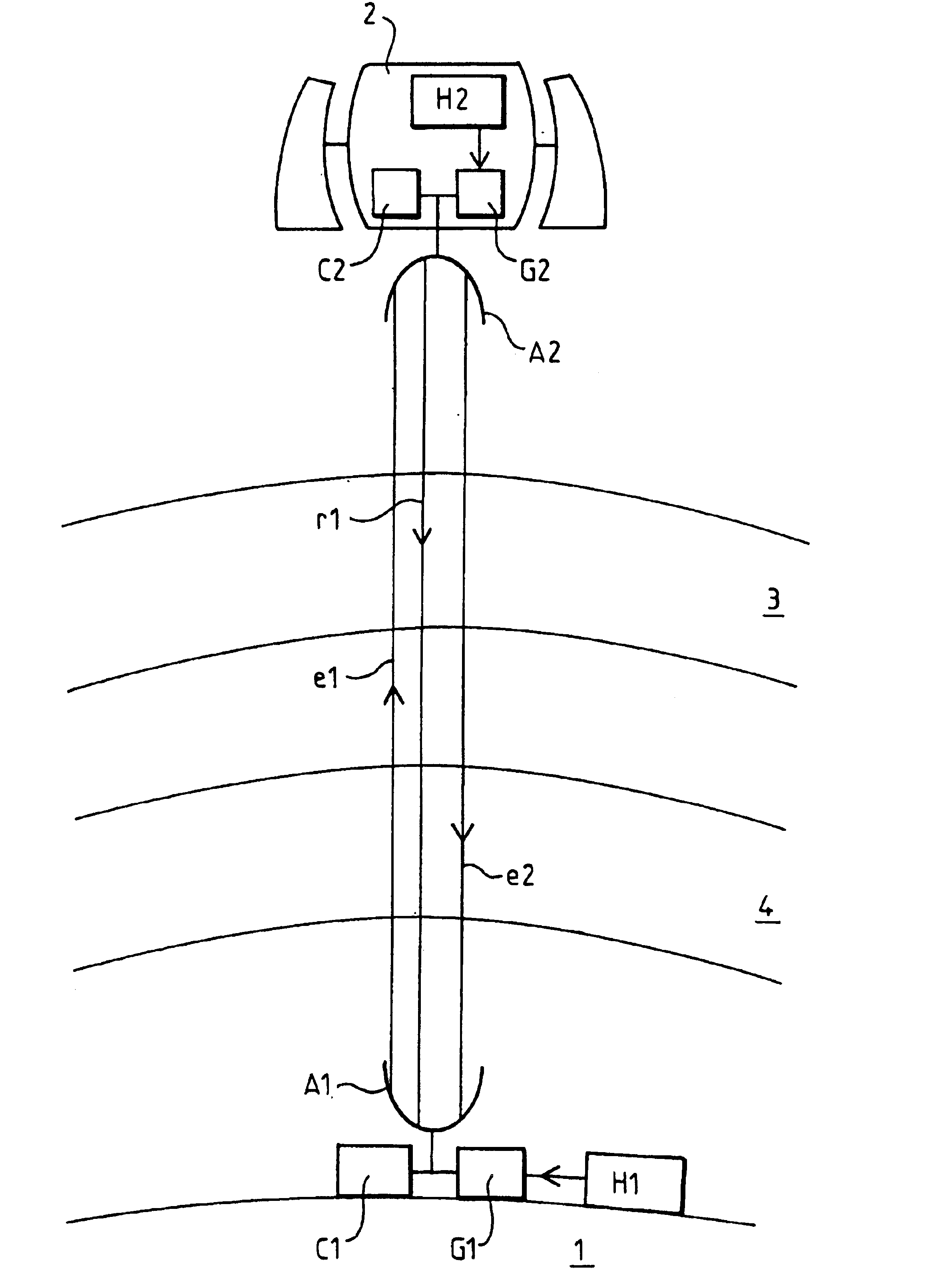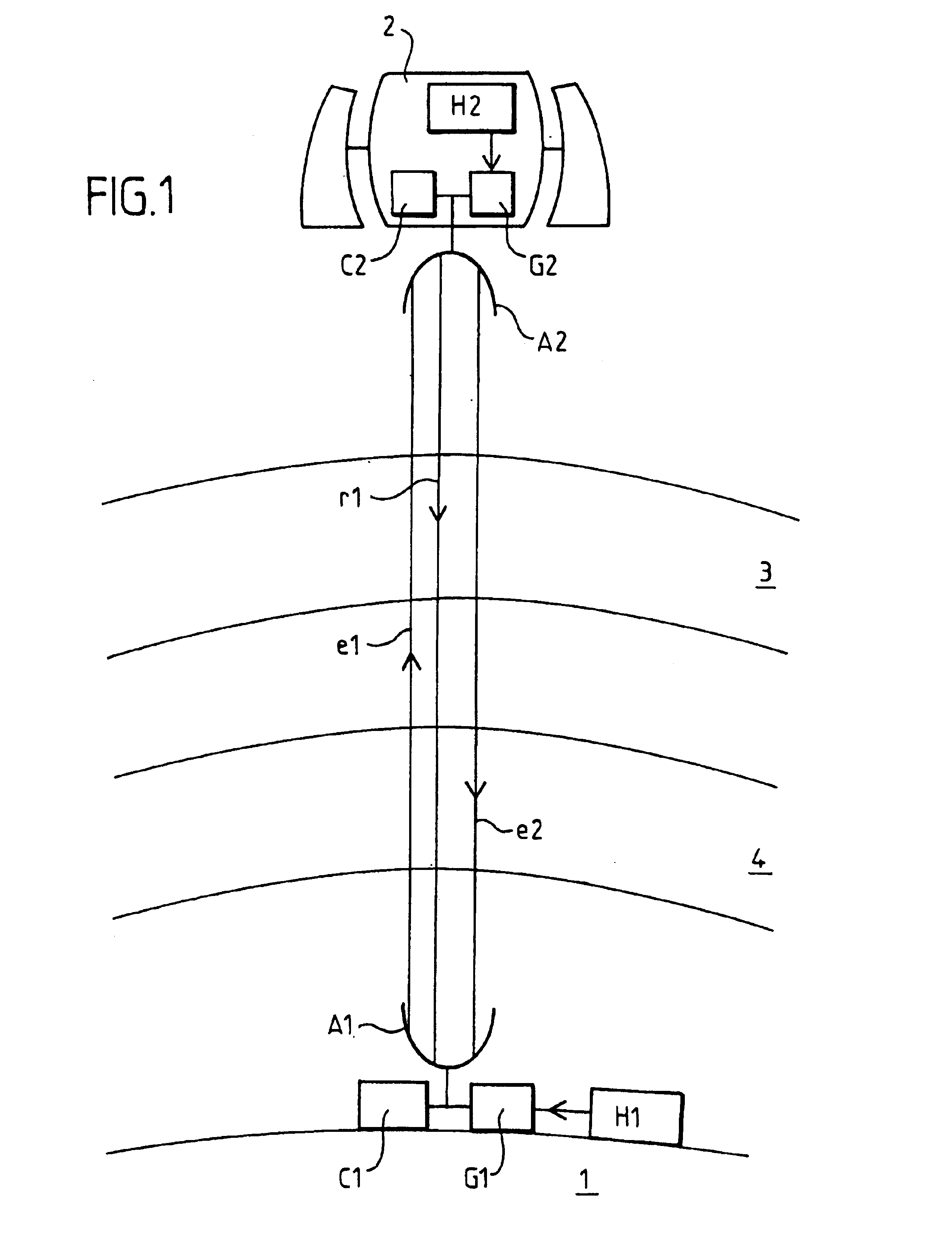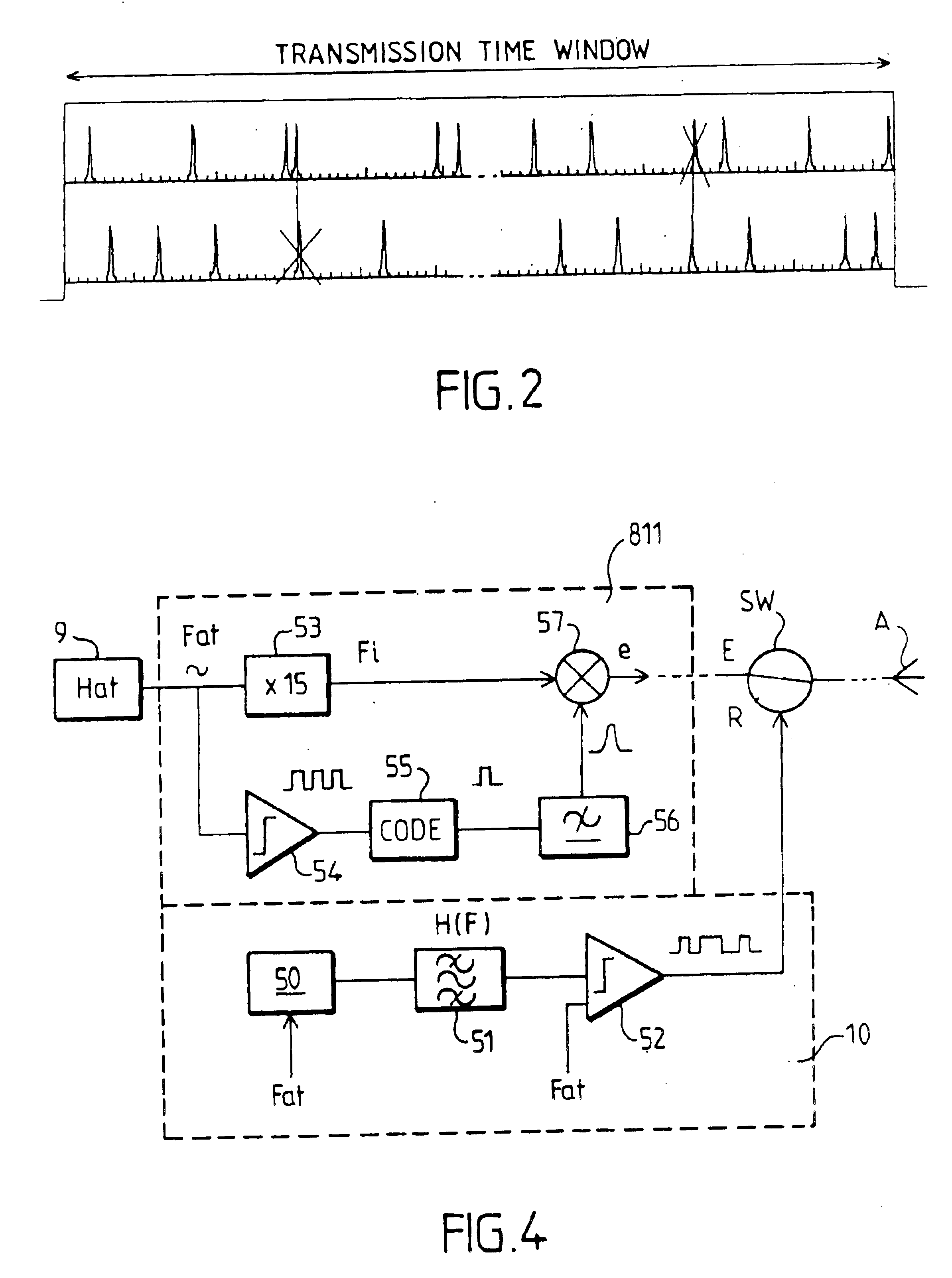Device for exchanging radio signals provided with time markers for synchronizing clocks
- Summary
- Abstract
- Description
- Claims
- Application Information
AI Technical Summary
Benefits of technology
Problems solved by technology
Method used
Image
Examples
Embodiment Construction
The following detailed description and the drawings related thereto contain essentially elements of a certain character. The drawings can therefore not only serve to give a better understanding of the invention but also contribute to its definition, where necessary.
It is considered hereinafter that the device according to the invention is applied to the precise measurement of a time difference between two distant atomic clocks. The precision required for this measurement is around 1 picosecond. The two atomic clocks H1 and H2 are for example cooled caesium clocks.
As shown in FIG. 1, the clock H2 is on board a satellite 2 in low orbit. The other clock H1 is on the ground. This is the context of the experiment on a satellite known as “alpha station”.
Conventionally, the measurement of the difference between a distant clock and a local clock is effected optically. A pulsed laser beam is used, generally with a wavelength of around 532 nanometers. However, the absorption and diffusion of ...
PUM
 Login to View More
Login to View More Abstract
Description
Claims
Application Information
 Login to View More
Login to View More - R&D
- Intellectual Property
- Life Sciences
- Materials
- Tech Scout
- Unparalleled Data Quality
- Higher Quality Content
- 60% Fewer Hallucinations
Browse by: Latest US Patents, China's latest patents, Technical Efficacy Thesaurus, Application Domain, Technology Topic, Popular Technical Reports.
© 2025 PatSnap. All rights reserved.Legal|Privacy policy|Modern Slavery Act Transparency Statement|Sitemap|About US| Contact US: help@patsnap.com



